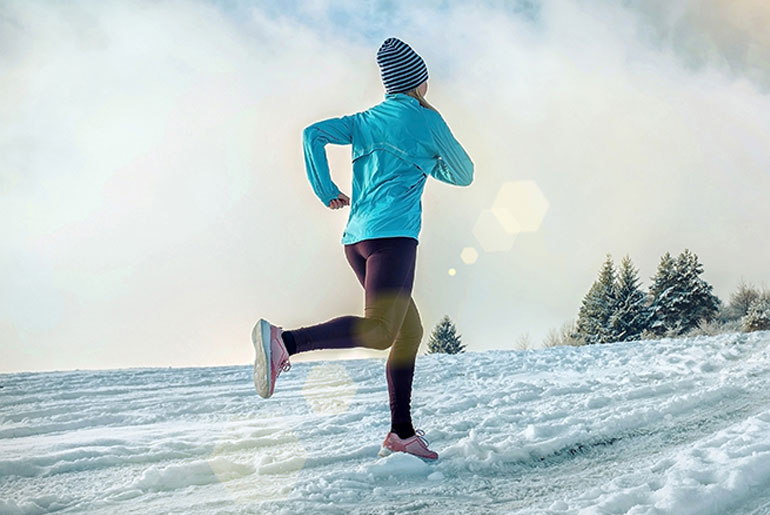As a cold wave envelops North India, individuals may be tempted to stay bundled up indoors, potentially neglecting their well-being. While it’s crucial to avoid prolonged exposure to the cold, it’s equally important to step out during warmer hours and bask in the sun for overall health. For winter running enthusiasts, adhering to certain tips is essential. Layering up in warm clothes for winter running, ensuring a thorough warm-up, and taking necessary precautions can facilitate weight loss and help maintain an active lifestyle. Given that the cold may suppress thirst sensation, staying adequately hydrated is vital for runners. Additionally, incorporating plenty of fruits and vegetables into the diet ensures sufficient fiber and hydration, contributing to overall health during the winter months.
Your body serves as an effective communicator, providing signals that should not be ignored during physical activities. Any sensations of pain, numbness, or discomfort should be heeded, and the workout should be halted immediately. Ignoring such signals can lead to injuries and hamper your overall well-being. It is highly advisable to consult with a fitness expert or healthcare professional before engaging in activities like running or intense exercises.
Embracing outdoor workouts during the winter demands heightened precautions from fitness enthusiasts. Prioritizing safety and well-being, individuals should initiate sessions with thorough warm-ups, considering the impact of colder temperatures on muscles. Proper layering, covering extremities, and staying hydrated are essential to combat the winter chill.
Rules to remember while winter running:
1. Proper Warm-Up:
Begin your outdoor workout with a thorough warm-up to prepare your muscles for the colder temperatures. This can include dynamic stretches and light cardio to increase blood flow and flexibility.
2. Layer Up:
Dress in layers to protect yourself from the cold. Start with a moisture-wicking base layer to keep sweat away from your skin, add an insulating layer for warmth, and finish with a waterproof and wind-resistant outer layer to shield against the elements.
3. Protect Extremities:
Don’t forget to cover your hands, feet, and head. Wear gloves, thick socks, and a hat to prevent heat loss from these areas, as they are more susceptible to cold-related discomfort.
4. Stay Hydrated:
Even in colder weather, staying hydrated is crucial. The air tends to be drier, and you might not feel as thirsty, but your body still needs water. Drink water before, during, and after your workout.
5. Be Visible:
With shorter daylight hours in winter, visibility is essential. Wear reflective clothing or accessories and choose well-lit routes to ensure you’re easily seen by motorists and other pedestrians.
6. Listen to Your Body:
Pay attention to any signs of discomfort or pain during your workout. If you experience numbness, tingling, or extreme cold, it’s wise to stop and seek warmth. Don’t push yourself too hard in extreme conditions.
7. Consult a Professional:
Before making significant changes to your workout routine in colder weather, consult with a fitness expert or healthcare professional. They can provide personalized advice based on your health and fitness level.
8. Choose the Right Footwear:
Ensure your shoes provide good traction to prevent slipping on icy or wet surfaces. Consider shoes that are waterproof or water-resistant to keep your feet dry.
9. Plan for Wind Chill:
Be mindful of the wind chill factor, as it can significantly impact how cold it feels. Adjust your layers and route planning accordingly to minimize exposure to strong winds.
10. Post-Workout Care:
After your outdoor workout, change out of wet clothes promptly to avoid getting chilled. A warm shower can help raise your body temperature, and proper nutrition aids in recovery.
By incorporating these precautions, fitness enthusiasts can continue to enjoy outdoor workouts during the winter while prioritizing safety and well-being.
Disclaimer:
The information contained in this article is for educational and informational purposes only and is not intended as a health advice. We would ask you to consult a qualified professional or medical expert to gain additional knowledge before you choose to consume any product or perform any exercise.







